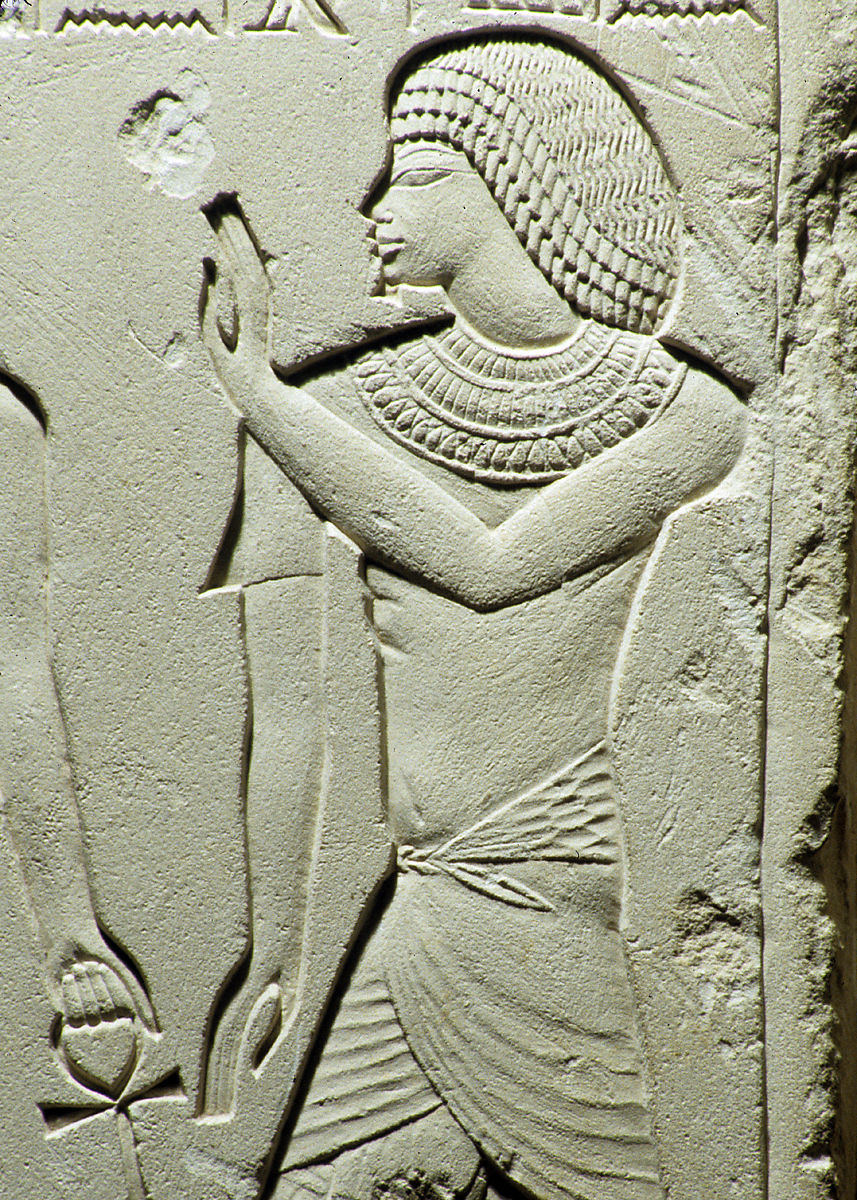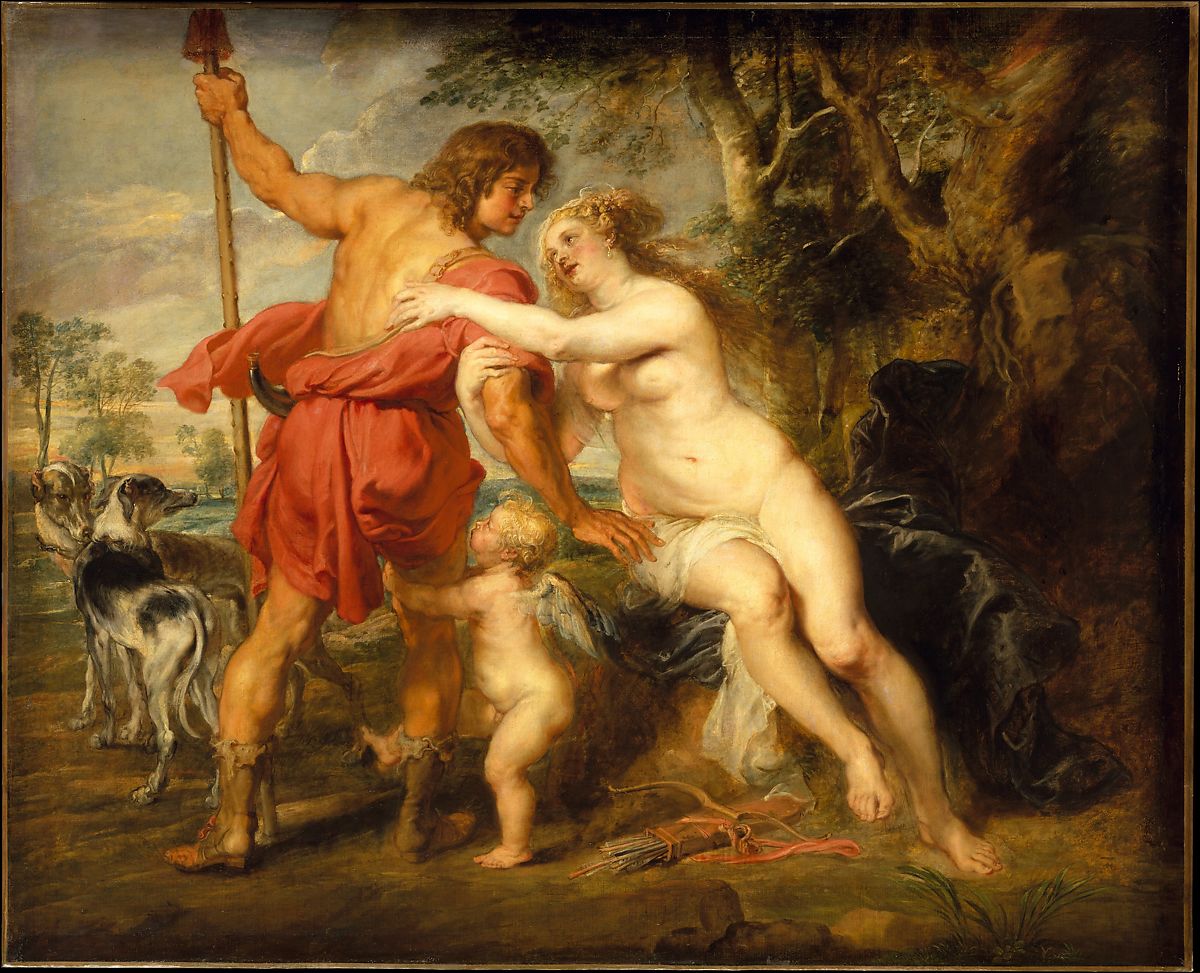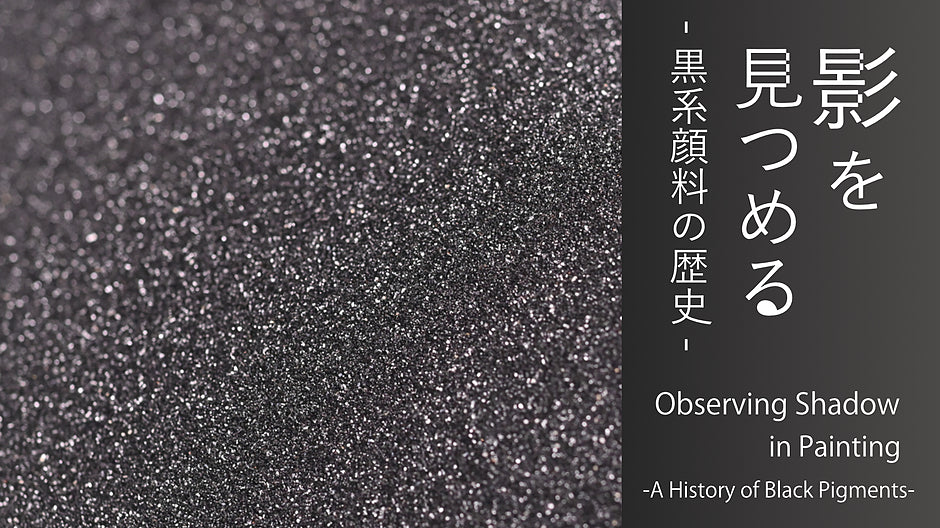The origin of painting is a very uncertain question, with some saying that it first appeared in Egypt 6,000 years ago, and others saying that it was discovered by the Greeks before it made its way to Europe.
However, there is one coincidence that all the paintings have in common: they all begin by tracing the outline of a human figure's shadow. As time went by, not only the contours but also the shades of shadows were drawn, and this drawing principle has continued to evolve until the painting we see now.

《Stela of Senu》ca.1390–1352 B.C,The Metropolitan Museum of Art
As Leon Battista Alberti quoted in his treatise “De Pictura (English: On Painting)”, "The philosophers say that nothing can be seen which is not illuminated and colored”. Capturing shadows is as important as portraying the outlines.
Black pigments for painting such shadows have been used since ancient times.
According to the Roman natural philosopher Gaius Plinius Secundus(also known as Pliny the Elder), the famous Athenian painters, Polygnotus and Micon, obtained black colorations from grape pomace, and Apelles refined it by burning ivory.
However, nowadays, Wine Black pigments which are made from grape pomace are becoming less and less available. Besides, it has become impossible to import ivory as a raw material due to the Washington Convention, so Ivory Black pigments, which originally are made by firing ivory, retain only its name, and carbonized ivory from other animals has used as a substitute.
At present, there are three main types of black pigments used in the world of painting.
As mentioned above, Ivory Black uses carbonized animal bones as the pigment. It has a slight reddish tinge and can be mixed with white pigments to produce a reddish-gray coloration.
Lamp Black is pigmented with the soot that forms when the oil is incinerated. It is a bluish-black pigment with no luster, and when it’s mixed with white pigments, it turns into a softer gray.
Moreover, the name "Peach Black" comes from the fact that in the past, peach seeds were baked and used as a pigment. The color is an intermediate tone between warm and cold. It has a high jet blackness and has the blackest appearance.
However, because Peach Black is less effective by itselfthan other black pigments, it is more suitable for mixing colors.
However, one of the characteristics of these black pigments is that they dry very slowly.
Of course, before modern times, there were no drying accelerators such as alkyd resin, so painters of the time added pigments like greenish-blue to make the black pigments dry faster.
In fact, Peter Paul Rubens also used charcoal to do the gray imprimatura.
Let's have a look at one of Peter Paul Rubens works.
“Venus and Adonis”, the subject of this painting from P.Ovidius Naso’s Metamorphoses.
His works begin with a smooth white ground on canvas. He then painted over it with an irregular touch of brown paint (as the imprimitura), and then applied the thick paint characteristic of oil paint to the highlights, while applying a thin layer of color to the dark areas so that the undercoat shows through.
This certain way of painting technique makes his work look dynamic and gorgeous.

《Venus and Adonis》Peter Paul Rubens,probably mid-1630s,The Metropolitan Museum of Art
Needless to say, no rule says you can only use black pigments for painting shadows.
In fact, using only black tends to be a bit tonal and dull, and to create a rich painting ambience, shadows may be expressed by using colors with low saturation and lightness. Georges de La Tour, also known as the "night painter," used burnt umber and raw umber to create dramatic light and shadow.
The woman portrayed here is Mary Magdalen. When Christ was crucified, many of the male disciples fled from Jesus, but Mary Magdalen, along with several other women, stayed at the cross and watched over Jesus until the end.
André Malraux, a French novelist and art theorist from the 20th century, wrote in his book "The Voices of Silence" that in Georges de La Tour's drawing, the candles are weak and do not sufficiently depict the figures because the artist is trying to present the mystery of the night.

《The Penitent Magdalen》Georges de La Tour,ca.1640,The Metropolitan Museum of Art
Joan Miró is one of the artists who have taken the advantage of the strong contrast of black pigments to create a sophisticated painting ambience.
Joan Miró found significant meaning in a variety of colors.
Blue, representing the sky, was his signature color, and he used it as the background color in several of his paintings. Brown is the color of his hometown in Catalonia, the color red represents the sun and women, black is the root of life and darkness, and yellow is the symbol of infinity.
This work painted in 1928 is one of a series inspired by 17th-century Dutch genre paintings.
The figure in the middle creates a very unique composition with his stenographic expressions.

《Dutch Interior (III)》Joan Miró,1928,The Metropolitan Museum of Art
As you can see, there are many different ways to use the color black and create shadows, depending on the era and the artist.
Moreover, by mixing complementary colors such as red and green, it is possible to create a variety of tones for shadow without using any black pigments.
PIGMENT TOKYO's online store has a color sorting function for pigments, allowing you to pick the color you are interested in right away and add it to your cart.

Perhaps some of you may find yourself using the same black pigments all the time.
Maybe it’s time for you to find and try a new color through PIGMENT TOKYO!
References:
・As Leon Battista Alberti, “De Pictura (English: On Painting),” (Chuo Koron Bijutsu Shuppan, 2011)
・Victor I. Stoichita, “ Brief History of the Shadow”(Heibon Sha, 2008)
・Nicolaus, Knut, “The Restoration of Paintings” (Bijyutsu Shuppansha, 1985)
・Kazuo Jo, Nichiyo Hashimoto “History of Paintings and their Colors” (PIE International, 2013)
・HOLBEIN website “The Anatomy of Color Materials (14) Black Oil Paints” (Viewed on November 15, 2020)
https://www.holbein.co.jp/blog/art/a189
・Christian Media Online, WORD of LIFE “Who is Mary Magdalene ?(Readable in 3 minutes)”(Viewed on November 15, 2020)
https://www.wordoflife.jp/bible-52/
Translated by Atsumi Okano, Nelson Hor Ee Herng
PIGMENT TOKYO Art Materials Expert







